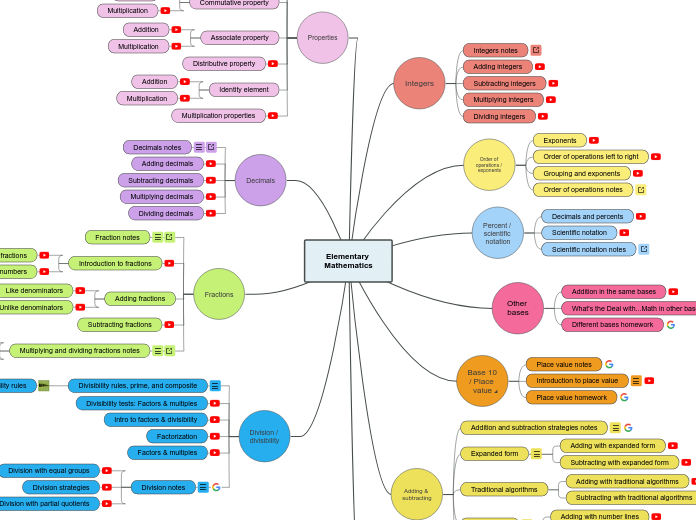Elementary Mathematics
Integers
Integers notes
Adding integers
Subtracting integers
Multiplying integers
Dividing integers
Order of operations / exponents
Exponents
Order of operations left to right
Grouping and exponents
Order of operations notes
Percent / scientific notation
Decimals and percents
Scientific notation
Scientific notation notes
Other bases
Addition in the same bases
What's the Deal with...Math in other bases??
Different bases homework
Base 10 / Place value^
Place value notes
Introduction to place value
Place value homework
Adding & subtracting
Addition and subtraction strategies notes
Expanded form
Adding with expanded form
Subtracting with expanded form
Traditional algorithms
Adding with traditional algorithms
Subtracting with traditional algorithms
Number line
Adding with number lines
Subtracting with number lines
Base 10 blocks
Subtracting with base 10 blocks
Adding with base 10 blocks
Properties
Properties notes
Math properties homework
Commutative property
Addition
Multiplication
Associate property
Addition
Multiplication
Distributive property
Identity element
Addition
Multiplication
Multiplication properties
Decimals
Decimals notes
Adding decimals
Subtracting decimals
Multiplying decimals
Dividing decimals
Fractions
Fraction notes
Introduction to fractions
Proper and improper fractions
Improper fractions and mixed numbers
Adding fractions
Like denominators
Unlike denominators
Subtracting fractions
Multiplying and dividing fractions notes
Dividing fractions
Multiplying fractions
Division / divisibility
Divisibility rules, prime, and composite
Divisibility rules
Divisibility tests: Factors & multiples
Intro to factors & divisibility
Factorization
Factors & multiples
Division notes
Division with equal groups
Division strategies
Division with partial quotients
Multiplication
Multiplication strategies
Multiplication strategies notes
Array
Number line
Skip counting
Area model
Traditional algorithm
Partial products
Lattice method
Repeated addition
Equal groups
